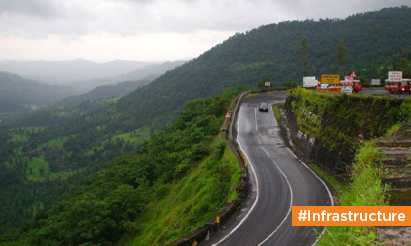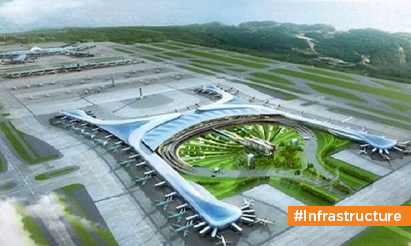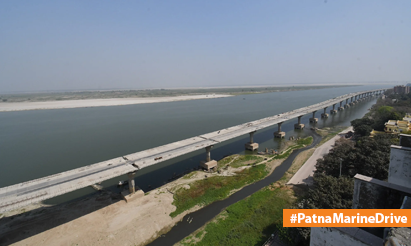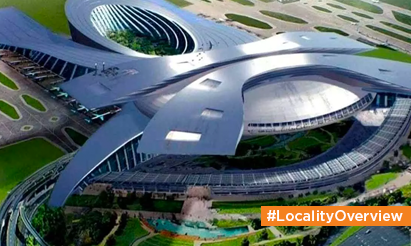A view of the Mumbai-Nagpur Expressway from Samruddhi Mahamarg
Maharashtra Samruddhi Mahamarg would be a comprehensive Greenfield expressway that will span 8,600 hectares of land and cost 55,000 crores to construct. It is intended to be the quickest road in the country, with speed limits of up to 150 km/h on the plains and 120 km/h on the incline parts that cover the Western Ghats’ mountainous terrain.
The project consists of a six-lane highway with a width of 120 metres that can be enlarged to eight lanes. The Mumbai-Nagpur expressway travels through 390 villages, 10 districts, and 24 Talukas on its way to Nagpur. It would begin in Amane village in Thane district and ends in Nagpur district’s Shivmadka village.
The Mumbai-Nagpur Expressway is the country’s largest Greenfield road, with 65 flyovers, 24 interchanges, 6 tunnels, 400+ vehicular and 300+ pedestrian underpasses, and a cattle underpass. The project is split in to 16 packages, each of which is assigned to one of 13 major contractors, including Afcon Infrastructure, Larsen & Toubro, and Reliance Infrastructure. The project is being built using the EPC (Engineering, Procurement, and Construction) process. Native materials, fly ash, and fly ash will be used in the building. Rainwater will be captured for freshwater resources, maintaining sustainability in mind. During the expressway’s construction, a single-layer concrete paver was used for the whole 15-meter width of the concrete slabs. The project’s goal is to create a real-time logistics network. It also features a utility corridor that runs alongside the freeway and distributes optical fibre connectivity, gas pipes, and electricity lines. The expressway will be built to international road design and safety standards, with a smart highway management platform for traffic control.
The Mumbai-Nagpur Expressway has a number of unique features. The expressway has CCTV coverage and is a zero-fatality corridor. Every 5 kilometres along the corridor, telephone booths will be available in case of an emergency. In the event of a national emergency, it will have a runway for fighter jets and aircraft. It will have an e-way with electric supercharger stations to meet the increased demand for E automobiles. Featuring refreshment plazas each 40-50 kilometres, the route ensures that no traveller goes hungry. Improved street lighting, digital signs, underground lighting, and bridge aesthetics will all be part of the expressway’s illumination. It will connect a variety of tourism destinations, including pilgrimage and heritage sites. Shirdi is one of the most popular tourist destinations that will benefit from this road. Lightweight vehicles will be charged €1,200 in tolls.
The expressway is currently being built. The Igatpuri tunnel, which is 7.78 kilometres long, has been finished. The section between Nagpur and Shirdi has been completed and will be available to vehicular traffic shortly. The highway will provide a variety of benefits to the country once it is operating. It will promote communication by linking a number of rural towns and villages. The Samruddhi Corridor will be seen by approximately 36% of the state’s population as a significant progress generator that will have a direct and positive impact on their livelihood. By installing solar plants with a capacity of 250MW, the Samruddhi Mahamarg corridor seeks to become a more energy-efficient corridor. It will also link the country’s busiest container port, JNPT in Mumbai, with Nagpur’s MIHAN, allowing for faster national and international trade logistics. It has also drawn a slew of investments that will help to enhance Maharashtra’s rural districts. The Mumbai Nagpur Expressway not only connects the state’s two largest cities but also secures the state’s and nation’s unprecedented prosperity!
Disclaimer: The views expressed above are for informational purposes only based on industry reports and related news stories. PropertyPistol does not guarantee the accuracy, completeness, or reliability of the information and shall not be held responsible for any action taken based on the published information.




